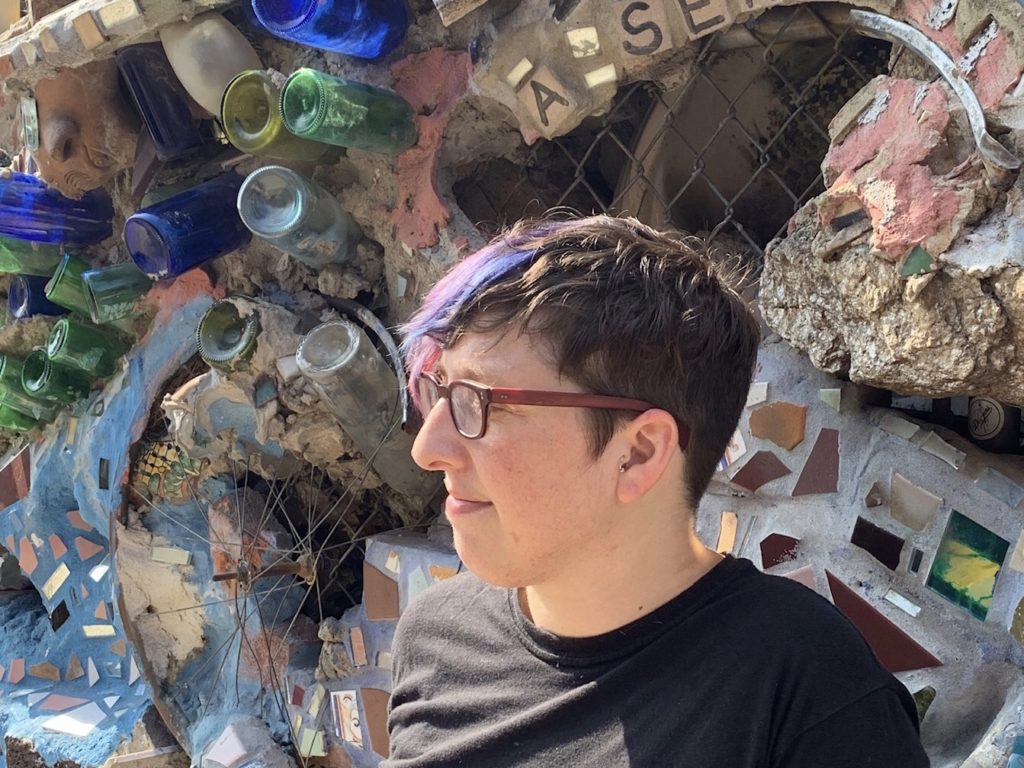
Q: How do you identify? What is/are your preferred pronoun(s)?
A: My gender identity is non-binary, and my pronouns are they/them. My broader identity, which intersects with my gender and affects my gender experience, is that of a white, queer, able-bodied, polyamorous, adult person.
Q: Why is your identity important to you?
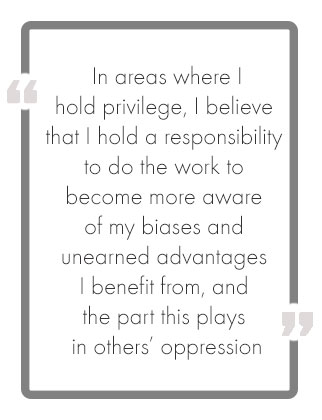
A: My identity informs how I move through the world, how I relate to others, how my voice and experience are centralised and decentralised. In aspects of my identity that are marginalised, I find community and connection with those who share these experiences. In areas where I hold privilege, I believe that I hold a responsibility to do the work to become more aware of my biases and unearned advantages I benefit from, and the part this plays in others’ oppression. It is only in doing so that I am able to try to unlearn these biases, create and hold space for other voices, and do less harm.
Q: How have children and adults responded to revelations of how you wish to be seen and addressed?
A: Coming out with my gender identity and pronouns has happened in stages over the past few years, and is an ongoing process. Claiming my identity as a non-binary person began about 3-4 years ago. I started using they/them pronouns around the same time, and then began the search for a name that would affirm my newly found gender identity, which I settled on shortly after. The first stage of the process was to share these changes with my community of queer and trans friends, as well as people I thought of as allies. While I would not say this was easy for me to do, I was confident that it would be well-received, and it was.
Throughout the first year, I continued to inform friends, as well as select colleagues, about my identity, name, and pronouns. All were supportive, though some struggled with accepting and practising pronouns. It was also difficult to shake being addressed in groups as “ladies” among people who I had told. This was especially prevalent at work, where everyone else on staff, aside from our facilities person, is cis-female.
I spent a little over a year holding different identities between school and my personal life, switching names and pronouns between the two. We use first names in the classroom at my school, and using my legal (assigned female) name felt uncomfortable and false. It made me feel disconnected at work, and I really didn’t like hiding this part of myself from my students when I was trying to teach them to embrace their own identities boldly and bravely. Before the school year began last year, I decided to speak to the administration about changing my name at work. I was very fortunate to be in a situation where this was met with complete support, more than I expected. The person that I met with listened to my ideas about how I would share this with my class, and with staff, and we had a good conversation about options. I was so appreciative of this response, and the agency I was given in the process.
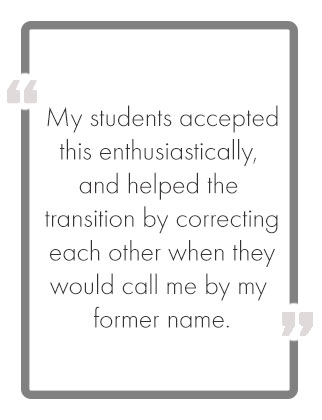
I told the whole staff (about 70 people!) about my name in our first staff meeting of last year. I did not go into detail about gender, though many staff members put the pieces together. I had quite a few people come up to me in the following days to offer support, and I talked about pronouns and gender in some of those conversations. I told my students on the first day of school, through a “Story of My Name” activity. I shared that I had a new name that people in my life called me, and that I wanted them to use that name for me too. I explained that this was a name I chose to use because the name that I was given by my parents wasn’t a good fit for me anymore, since it was too much of a girl’s name, and didn’t feel right for me and my identity. My students accepted this enthusiastically, and helped the transition by correcting each other when they would call me by my former name.
This year, I told my students that I identify as non-binary, as I modeled making an identity web for them. Three of my students, after hearing my explanation of this identity, identified themselves as non-binary on their identity webs.
I have now shared my pronouns with all staff. Some have made an effort to use they/them pronouns for me, some have not yet. I have not discussed my pronouns with students yet, but it is Transgender Awareness Month, and I’m planning to use that opportunity to take this next step next week!
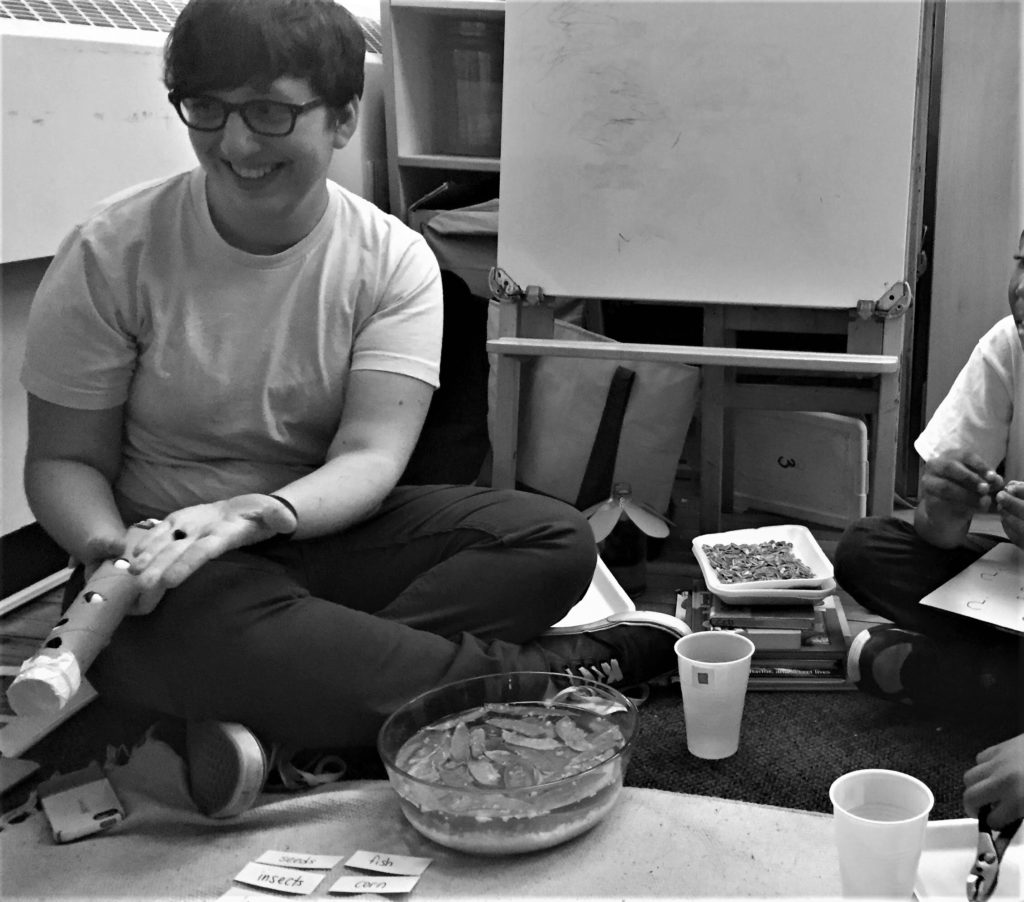
Q: What are some ways we can support and facilitate gender-sensitive and diverse Montessori spaces?
A: At any level, it is so important for educators to do the work to understand and recognise their biases around gender. Binary language (boys and girls, ladies and gentlemen, etc.) should be avoided. Educators should regularly reflect on assumptions made around behavior based on gender, and should openly encourage exploration of all activities, topics, colors, etc., regardless of the gender of the child. Does the teacher default to choosing boys when physical tasks need to be done? Are fairy tale books recommended to girls? These are a couple of examples of ways that gender biases get subtly communicated (both of which I have done before myself).
The representation of gender in the classroom needs to be expansive. Books and materials should reflect a diverse range of gender identities. Gender should be talked about openly in the classroom! And not just binary gender, but a range of gender identities. Children should learn what transgender means, and should learn that some people don’t identify as male or female. This should be normalised in conversation about identity and human diversity. Students should also learn to think critically about gender, and recognise gender bias. In an upper elementary classroom, there are so many engaging discussions to be had!
Q: Name one reason why you absolutely love working with children?
A: I love the constant state of discovery that children are in, and being able to play a part in this. I love seeing identities unfold as children become more aware and informed about the world and their place in it.
Q: What is your favourite film/book? And, why?
A: Oh, this question is overwhelming and it feels impossible to pick one. I generally prefer non-fiction books, and memoirs are probably my favorite thing to read. The most recent memoir I read and loved was Heavy by Kiese Laymon. I felt completely gutted after reading it. It was vulnerable, honest, and unapologetic. It was both intensely personal and also completely reflective of so many larger issues affecting people in America: race and racism, masculinity, size, trauma, addiction, poverty. It really got to the heart of identity, and that way that one’s identity is shaped by both internal and external factors. Also, it was beautifully written with strong and poetic language.
Q: In an ideal world, what should our societies look like (in terms of gender)?
A: In thinking about this question, I had two contrasting thoughts: the first, that the concept of gender would not even exist. The second, that people would feel free to fully express gender in its infinite forms, without judgment, fear, or restraint. I used to lean toward the first option. Now, I like the second one.
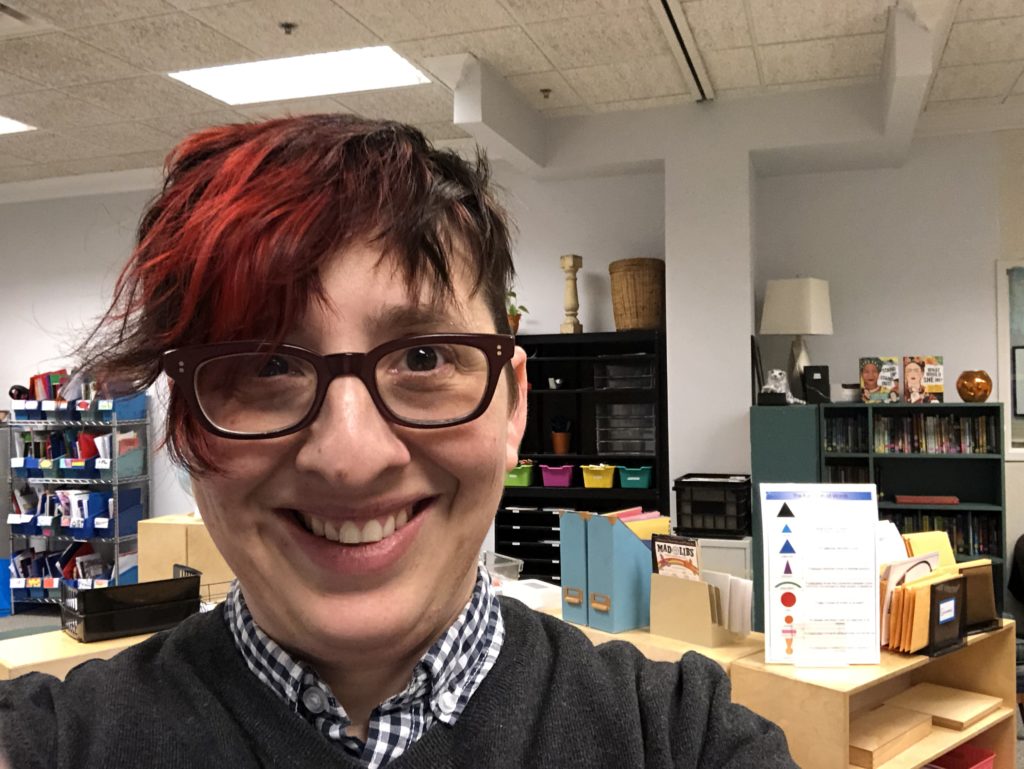
Rye Josloff is an American Montessori Society (AMS) credentialed and elementary certified teacher of 9-12 year-olds at a Montessori charter school in Wilmington, Delaware. They are a fierce advocate of public Montessori education, believing that every child deserves access to an education that will engage the child’s whole self and provide the experience and support to help them build independence, confidence, connection, and a love of learning. Rye is the co-lead of an ABAR (anti-bias anti-racist) committee at their school. This fuels much of their work, in addition to reminding them how much they still have left to learn. Some things that Rye gets excited about are art, interesting insects, podcasts, all things food-related, games, belt buckles, and their city of Philadelphia.
Great interview! What an inspiring gem!